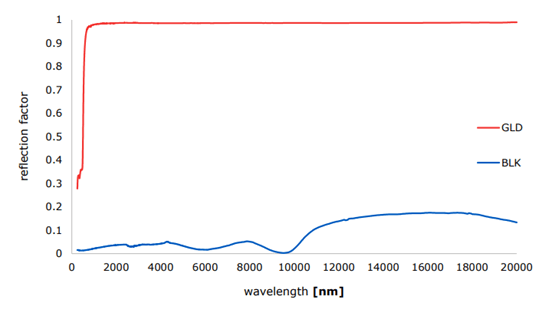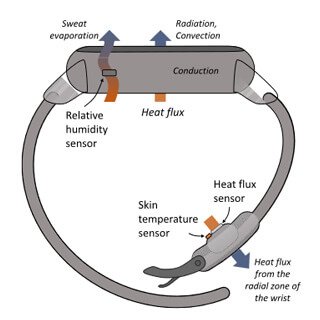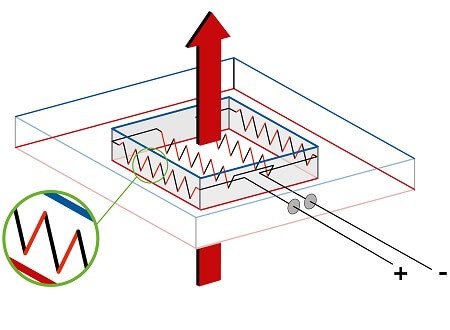8 tips to get a more accurate heat flux measurement
Measuring heat flux is a challenging task. At a macroscopic level, the presence of a sensor can influence the local heat flux, making it difficult to obtain accurate readings. Measurement errors may also originate at a microscopic level. The environment surrounding the sensor, particularly the thermal conductivity of the surrounding material, can affect the sensitivity of heat flux sensors.
This article includes 8 tips and tricks to avoid the most common errors and get a better result from your heat flux measurement.
Heat flux sensors
A heat flux sensor measures the rate at which heat energy is transferred through a surface in [W/m2]. Heat flux sensors have increasingly become essential tools in environmental research, monitoring of industrial processes, and much more.
Hukseflux heat flux sensors typically employ thermopiles. Thermopiles generate a signal due to the temperature difference between the hot and cold sides of the thermopile located at the two surfaces of the sensor foil. The signal is proportional to the heat flux through the sensor foil. Thermopiles are passive sensors; they do not require power. The output is usually a tiny millivolt signal.
How do you pick a sensor suitable for your application?
When you are interested in making a heat flux measurement for a specific application, you should ask yourself the following questions:
- What is the expected heat flux and temperature?
Multiple heat flux sensors are available, each suitable for a specific heat flux range. Choosing a sensor that can accurately cover the required range of your measurement is important. For instance, opting for a large-range sensor is unnecessary if measuring small heat fluxes. The Hukseflux sensors have different ranges between 1 to 1,000 000 W/m².
- What type of heat flux do you want to measure?
When selecting a sensor, it is important to identify whether conduction, convection, radiation, or a combination of these three is involved. Read more about this topic in our article: What is heat flux?
- What are the environmental requirements?
Environmental conditions such as sensor exposure to solar radiation, corrosive chemicals and moisture must be considered when measuring heat flux. Additionally, industrial settings may require certifications.
- What output do you need?
Heat flux sensors typically produce a small millivolt signal that must be measured with your measurement- and data acquisition system. Possibly, you need a converter between the sensor and the data acquisition system.
Once you have chosen the correct sensor, you should focus on installing the sensor properly. We will now offer eight tips to get the best out of your heat flux measurement.
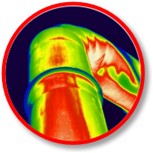 Choose a location that is representative of your surroundings
Choose a location that is representative of your surroundingsTo ensure accurate measurements, it is important to consider whether the location of the heat flux sensor is representative of the surroundings. Large heat flux sensors provide a more general outcome, while small sensors usually yield more accurate local results. Thermal processes are often non-uniform so local point measurements may be misleading. Taking the average of multiple measurements over a large area is recommended to obtain a comprehensive view.
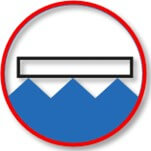 Avoid air gaps between the heat flux sensor and the mounting surface
Avoid air gaps between the heat flux sensor and the mounting surface When installing a heat flux sensor, it is important to ensure good thermal contact between the sensor and its surroundings. A small layer of air can significantly impact the sensor’s ability to measure heat accurately. To avoid this, you should avoid air gaps and use methods such as glueing, double-sided tapes, welded connections, graphite sheets, or power strips to fill any gaps. For more guidance, please read the article: Heat flux sensor installation: how to do it?
 Take into account the surface’s colour
Take into account the surface’s colourWhen using heat flux sensors that measure radiation, it is important to consider the surface's colour. This determines an object’s ability to transmit, absorb or reflect thermal radiation. If necessary, the sensor surface should be painted to ensure accurate readings. It is important to note that shiny metallic surfaces reflect both infrared and visible radiation. While paint colours may differ in the visible range, they are typically "black" absorbers and black emitters in the far infrared.
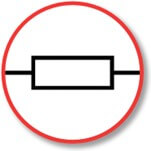 Use a sensor with low thermal resistance
Use a sensor with low thermal resistanceA heat flux sensor can impact the local heat flux, so using a sensor with low thermal resistance is best. The FHF foil heat flux sensors are designed to be thin and have low thermal resistance. This low resistance ensures a reliable measurement, avoiding any over- or underestimation of the actual heat flow.
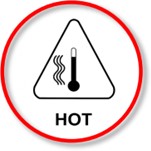 Adjust for temperature dependence
Adjust for temperature dependenceSensors are calibrated at room temperature (TCAL). Typically, the temperature dependence of the sensor is around 0.15 % per Kelvin. If you work at temperatures higher or lower than room temperature, it is important to inquire about the temperature dependence. Usually, a linear correction is applied with (T - TCAL) to adjust for the temperature. However, self-calibrating heat flux sensors may already compensate for the temperature dependence.
 Pay attention to signal ground
Pay attention to signal groundSignals generated by thermopiles are small direct current (DC) voltages that typically fall in the microvolt range. These signals are highly susceptible to distortion, making it necessary to ensure their immunity to external sources. To achieve this, giving special attention to grounding and shielding is important. One effective way to start is to ensure that signal wires are adequately insulated from the environment. This prevents the possibility of ground loops and protects them from humidity.
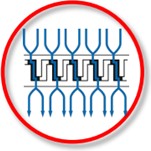 Use sensors with thermal spreaders to avoid micro effects
Use sensors with thermal spreaders to avoid micro effectsIf the thermopile sensor has direct exposure to the environment, there is a risk of so-called micro effects; on a micro scale (scale of the thermopile grid), the local heat flux gets distorted, showing a preference to travel through the thermopile. The result is that sensor sensitivity changes as a function of the thermal conductivity of the environment. The calibration is no longer valid. A thermal spreader, for example, using a metal cover, is a proven countermeasure. The heat flux first meets a metal plate, and the thermopile always has the same thermal environment. Hukseflux sensors such as FHF05 series and FHF06 have thermal spreaders, so you do not need to worry about that!
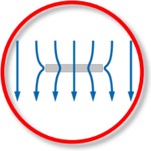 Use a passive guard to avoid errors caused by edge effects
Use a passive guard to avoid errors caused by edge effectsA heat flux sensor can distort the heat flow pattern in its vicinity, particularly around its edges. The heat may pass through the sensor rather than the surrounding material. To avoid errors caused by edge effects, a passive guard is necessary. This refers to a non-sensitive part around the sensor. Similarly, this effect can also come into play on a smaller scale. Hukseflux sensors such as the FHF05 series, the FHF06 and the HFP01 have thermal guards, so there is no reason to be concerned about that matter.
At Hukseflux, we are always available to help you find the best measuring system for your measurements. If you have any further questions, please do not hesitate to contact us.








